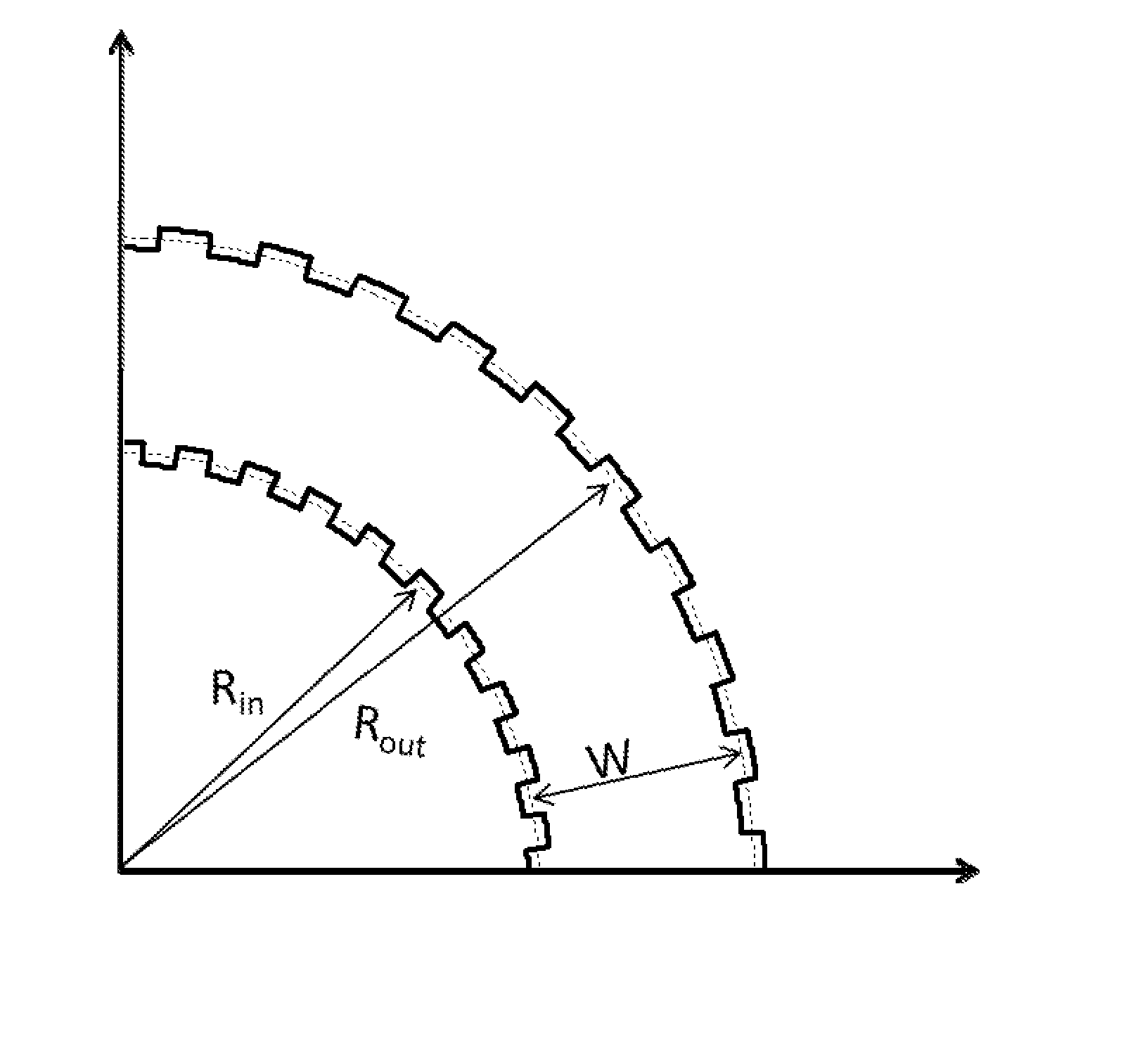Planar-waveguide Bragg gratings in curved waveguides
a bragging and waveguide technology, applied in the direction of optical waveguide light guides, instruments, optical elements, etc., can solve the problems of increased overall system size, increased insertion loss, and limited fiber location accuracy, so as to reduce fabrication requirements, reduce insertion loss, and increase the grating period
- Summary
- Abstract
- Description
- Claims
- Application Information
AI Technical Summary
Benefits of technology
Problems solved by technology
Method used
Image
Examples
Embodiment Construction
[0016]The present invention is a long chirped planar-waveguide Bragg grating with high dispersion that could be used for a variety of applications such as routing, filtering, dispersion compensation and optical time-stretch processing. The present invention provides planar-waveguide Bragg gratings that can provide customized dispersion properties for various applications.
[0017]It is important for signal processing applications to have large dispersion (long grating) and low optical loss gratings. With the present invention, the long chirped planar-waveguide Bragg grating with Archimedes' spiral geometry can be fit in a small area (for example, ˜1 m can be realized in an area of 1 cm2). The ability to form the grating in such a small area enables the use of a single photolithography mask. Therefore the large physical translation associated with long CFBG fabrication methods is avoided, and the associated specialized fabrication equipment is replaced by standard photolithography equip...
PUM
| Property | Measurement | Unit |
|---|---|---|
| grating reflectivity | aaaaa | aaaaa |
| area | aaaaa | aaaaa |
| insertion loss | aaaaa | aaaaa |
Abstract
Description
Claims
Application Information
 Login to View More
Login to View More - R&D
- Intellectual Property
- Life Sciences
- Materials
- Tech Scout
- Unparalleled Data Quality
- Higher Quality Content
- 60% Fewer Hallucinations
Browse by: Latest US Patents, China's latest patents, Technical Efficacy Thesaurus, Application Domain, Technology Topic, Popular Technical Reports.
© 2025 PatSnap. All rights reserved.Legal|Privacy policy|Modern Slavery Act Transparency Statement|Sitemap|About US| Contact US: help@patsnap.com



